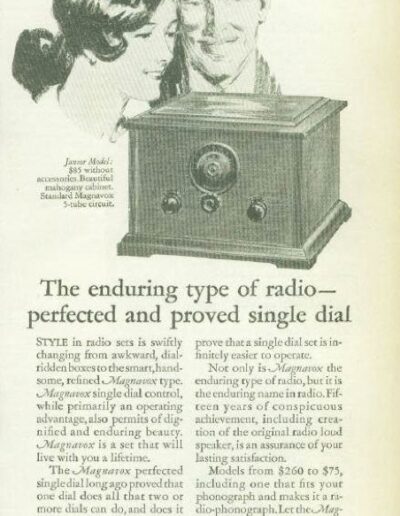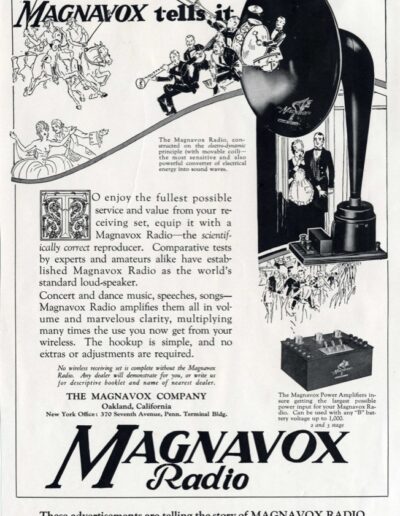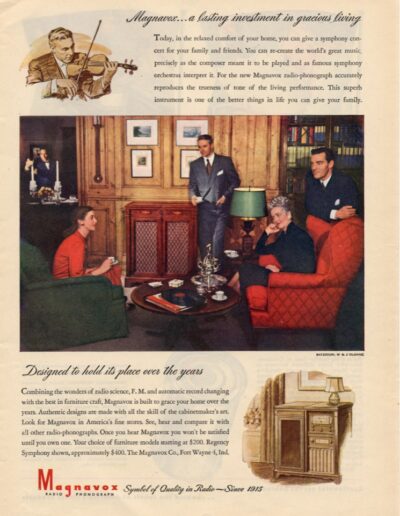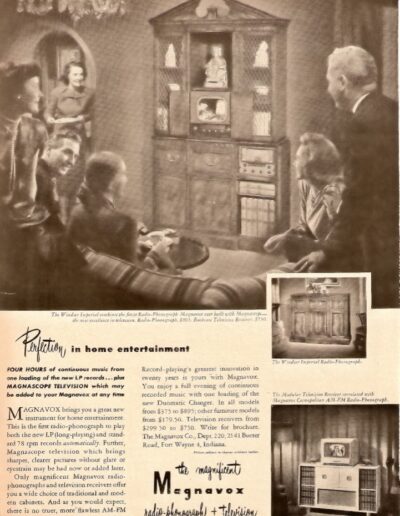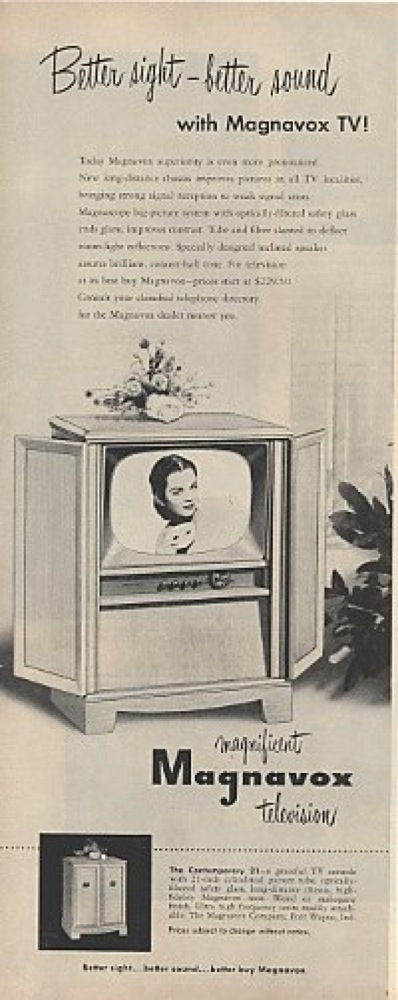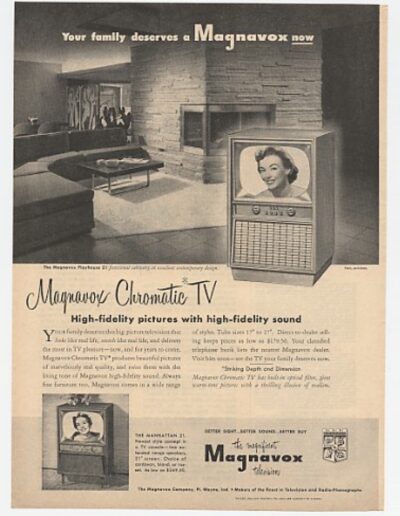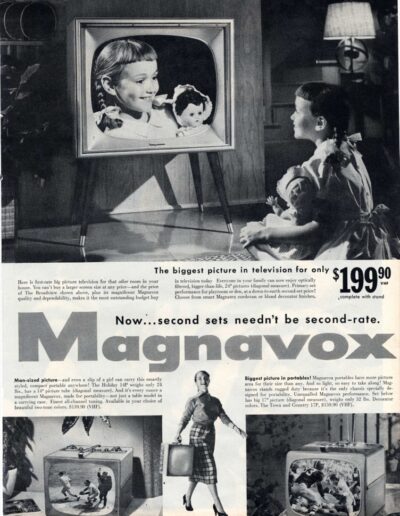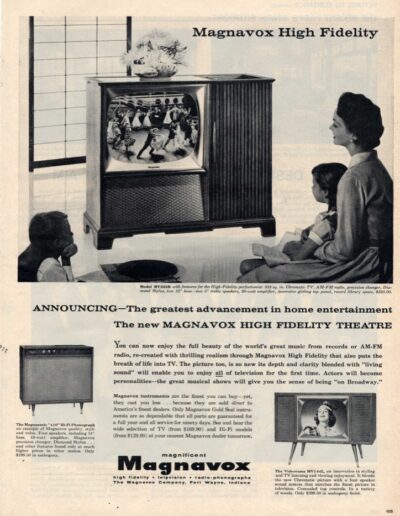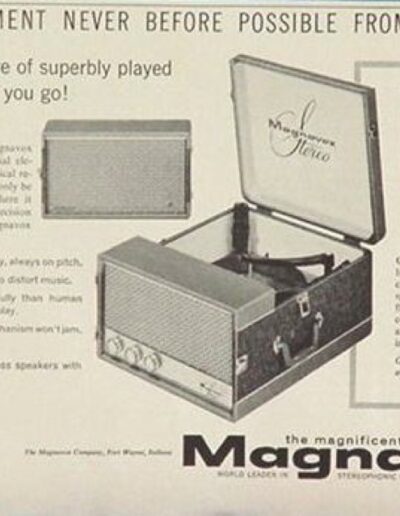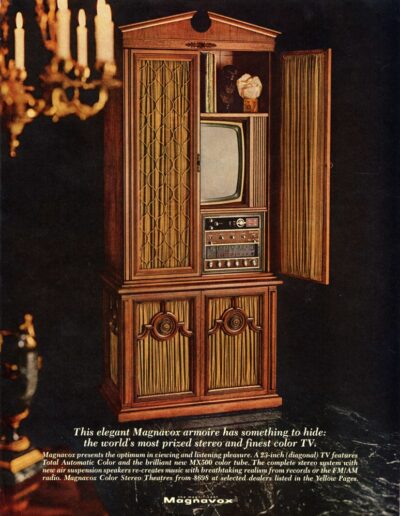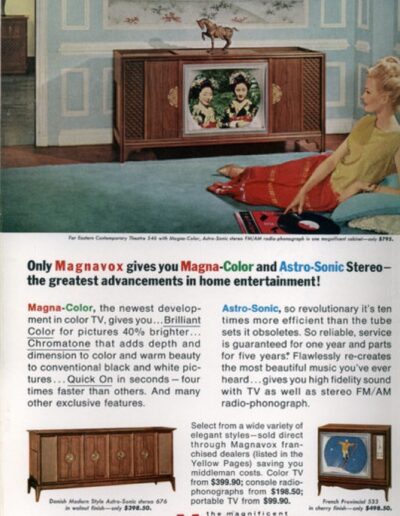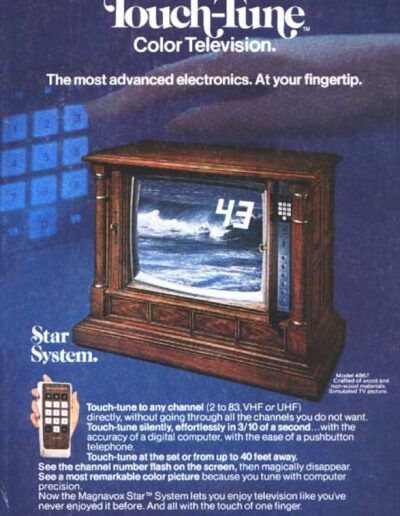Magnavox followed the trends in 20th century advertising, as evidenced in these selected ads from the collection of the Magnavox Historical Preservation Association.
During the 1920’s with increased consumer spending due in part to easy credit, Magnavox targeted families and wealthier consumers.
During World War II, Magnavox – as with other companies – showed its support for the country by placing its 1942 E-Award from the U.S. Navy on all of its marketing pieces. It also showed that its record-players went to war by picturing them on board Navy ships.
Magnavox departed, during the war, from popular trends in advertising by running a series of ads featuring famous musicians and depicting historic moments in music. This advertising campaign was likely initiated by Magnavox’s then Vice-President Frank Friemann, who was a supporter of classical music. The ads were based on a series of paintings commissioned from Walter Richards, Boris Chalipin, and Harry Anderson. The advertising copy for this series ran along three lines: good music is important to a child’s overall development; Magnavox has turned all its manufacturing toward support for the war effort but our consumer electronics products will return – so remember us; and music is a part of American history and a reason we are fighting. The series became so popular that Magnavox offered reprints of a set of ten paintings to the general public for 50 cents.
Magnavox did return to the market place after World War II with expansion of its consumer electronics products. Many ads featured inter-generational families and movie stars. During the early 50’s, movie studios feared competition from television and stipulated in their contracts that their stars could not appear in advertisements on TV. There was no restriction, however, in stars advertising televisions in print. Magnavox took full advantage of this loop-hole.
During the golden age of television, televisions and accompanying record players were seen as fine pieces of furniture. They were also a centerpiece of home entertainment, a news and music center, and in many cases – a beloved member of the family.
Throughout the 60’s, 70’s, and 80’s advertising featured a larger cross-section of society and reflected an appeal to a younger audience.
In viewing these ads, take a close look. They reveal changes in our culture, changes in interior design, and changes in technology. The images offer, perhaps, an idealistic vision that places the television and record player at the center of the American home and family.



